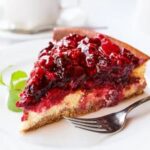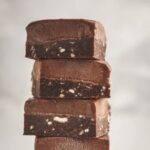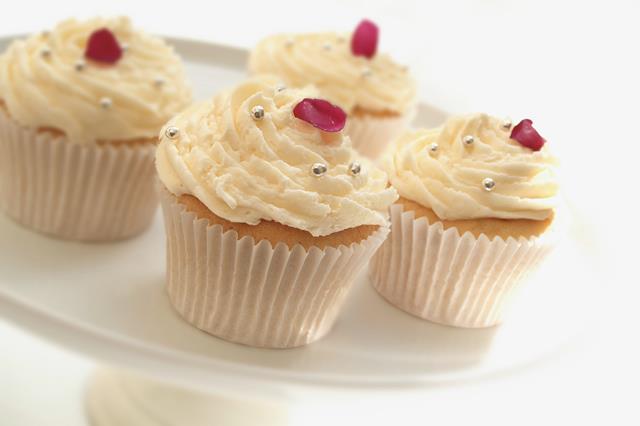What type of icing is best for cake decorating? Choosing the right icing is essential in the world of cake decorating, as it determines not only the visual appeal but also the texture and flavor of your creations. With a variety of options available, from classic buttercream to luxurious ganache, it’s important to understand the benefits and drawbacks of each type of icing to achieve the desired results.
When it comes to cake decorating, the choice of icing plays a crucial role in achieving the desired look and taste of a cake. Whether you’re aiming for intricate designs or a smooth finish, selecting the right icing can make all the difference. In this article, we’ll explore the various types of icing commonly used for cake decorating and provide guidance on how to choose the best option for different design needs.
From classic buttercream and royal icing to fondant, cream cheese frosting, ganache, and whipped cream, each type of icing offers unique characteristics that cater to specific design requirements. Understanding these differences is key to successful cake decorating. So join us as we delve into the world of cake decorating and uncover the importance of choosing the right icing for your creations.
Buttercream Icing
Here are some key points to consider when using buttercream icing for cake decorating:
- Versatility: Buttercream icing can be easily tinted with food coloring to achieve vibrant hues for decorating cakes. Additionally, it can be used as a base for adding decorative elements such as sprinkles, edible flowers, or fondant accents.
- Texture: The smooth and creamy texture of buttercream makes it ideal for creating seamless finishes on cakes. Whether you’re aiming for a rustic look or a more polished appearance, buttercream can be adapted to suit your design preferences.
- Flavor: Buttercream icing can be flavored in a variety of ways, from classic vanilla or chocolate to more unique options like lemon or almond. This allows decorators to complement the flavor of the cake while enhancing its visual appeal.
When considering what type of icing is best for cake decorating, buttercream stands out as a reliable choice due to its adaptability and ease of use. Whether you’re creating decorative borders, intricate floral designs, or simply smoothing out the surface of a cake, buttercream icing offers an excellent balance of texture and versatility.
Royal Icing
There are several benefits to using royal icing for intricate designs. Firstly, royal icing dries hard, which means that it can hold its shape well and won’t smudge or lose its form once applied to the cake. This makes it perfect for creating three-dimensional decorations that need to stand upright on the cake.
Additionally, royal icing can be colored with food coloring or gel paste to achieve vibrant hues, making it versatile for a wide range of design possibilities. Furthermore, because it dries quickly, royal icing allows decorators to work efficiently without waiting for layers to set before adding more details.
However, there are also some drawbacks to consider when using royal icing for intricate designs. One challenge is that royal icing sets quickly once exposed to air, so decorators need to work swiftly and cover any unused portions tightly with plastic wrap to prevent it from drying out. Another consideration is that while royal icing dries hard, it can also become brittle over time if exposed to air for too long.
This means that overextended periods of time after application may cause the decoration to break or crack if not handled carefully. Lastly, the taste and texture of royal icing may not be as appealing as other types of icings for those who prefer a softer and creamier finish on their cakes.
Overall, when deciding what type of icing is best for cake decorating involving intricate designs, consider the benefits and drawbacks of using royal icing in order to ensure the desired result in terms of design execution and aesthetic outcome.
Fondant
One of the main benefits of using fondant for cake decorating is its ability to be rolled out into thin sheets, making it easy to cover an entire cake with a seamless finish. This makes it ideal for creating intricate designs such as flowers, ribbons, and other decorative elements. Fondant also provides a blank canvas for adding details with food coloring, which allows for endless creative possibilities.
However, it’s important to note that while fondant provides a beautiful finish, it may not be the best choice for all types of cakes or climates. It can be prone to cracking in dry environments, and some people find the taste too sweet or the texture too chewy. As with any type of icing, it’s essential to consider the specific needs of your design when choosing whether fondant is the best option.
| Benefits | Considerations |
|---|---|
| Creates a smooth and polished finish | Prone to cracking in dry environments |
| Easy to shape into various designs | Some find the taste too sweet |
| Allows for endless creative possibilities with food coloring | Texture may be too chewy for some people |
Cream Cheese Frosting
Flavor Profile and Pairing
Cream cheese frosting adds a delightful tanginess to cakes, making it the perfect complement to sweet and rich cake flavors such as red velvet, carrot, or banana. Its creamy texture allows for easy application and smooth finishes, making it suitable for both layer cakes and cupcakes.
When using cream cheese frosting for cake decorating, consider incorporating different extracts or spices to enhance the flavor profile. For example, adding lemon zest or cinnamon can bring an extra dimension to the frosting’s taste.
Decorating With Cream Cheese Frosting
Due to its creamy consistency, cream cheese frosting is versatile for various decorating techniques such as piping borders, creating rosettes or swirls, and even forming intricate details like flowers or leaves. Keep in mind that cream cheese frosting does not hold up as well in warm temperatures compared to buttercream or fondant, so it may not be ideal for outdoor events during hot weather.
To ensure the best results when using cream cheese frosting for cake decorating, it’s important to work with chilled or slightly firm icing to maintain its shape.
For Those Looking for a Deliciously Tangy and Creamy Option for Cake Decorating,
Therefore, it is evident that cream cheese frosting offers a unique flavor and texture that can elevate the overall appeal of your decorated cakes. By understanding its flavor profile, pairing options, and decorating capabilities, individuals can make an informed decision on whether cream cheese frosting is the best choice for their cake decorating needs.
Ganache
Benefits of Using Ganache
One of the main benefits of using ganache for cake decorating is its smooth and glossy finish. When applied correctly, ganache creates a flawless canvas for intricate designs and decorations. Its rich chocolate flavor also adds an extra layer of decadence to any cake, making it a favorite among chocolate lovers. Additionally, ganache has great stability, which allows for intricate piping work and sculpted details on cakes without losing its shape.
Drawbacks of Using Ganache
While ganache is a popular choice for cake decorating, it does have some drawbacks to consider. One potential issue with using ganache is its sensitivity to temperature. Ganache can melt in warm conditions or firm up too much in cold environments, making it challenging to work with in certain settings. Additionally, because ganache is made from chocolate and cream, it may not be suitable for those with dairy allergies or dietary restrictions.
Best Uses for Ganache
Ganache is best suited for creating sleek and sophisticated designs on cakes, especially those with clean lines and sharp edges. It works well as both a frosting and filling, adding depth and richness to the overall cake experience. Furthermore, ganache pairs beautifully with various flavors such as raspberry, caramel, or even coffee, allowing for endless creative possibilities in cake decorating.
Whipped Cream
One of the main limitations of using whipped cream for cake decorating is its stability. Whipped cream tends to lose its shape and can deflate over time, especially in warm or humid environments. This makes it less suitable for intricate designs or elaborate decorations that need to hold their shape for an extended period of time. Additionally, whipped cream is not ideal for creating detailed piped designs that require precision and definition.
When choosing the best type of icing for cake decorating, it’s important to consider the specific needs of your design. While whipped cream may not be suitable for all types of cake decorations, it can still be a great option for light and fresh desserts.
Its delicate texture and subtle flavor make it perfect for summer cakes, fruit tarts, and other desserts where a lighter touch is desired. Ultimately, understanding the limitations of whipped cream as a decorating medium will help bakers make informed decisions when choosing the right icing for their creations.
Choosing the Right Icing for Your Design
In conclusion, the art of cake decorating offers a wealth of options when it comes to choosing the right icing. Whether you prefer the classic, versatile nature of buttercream icing, the polished finish of fondant, or the unique flavor of cream cheese frosting, there is a perfect choice for every design. Each type of icing has its own benefits and limitations, so it’s important to consider texture, flavor, and design possibilities when making your selection.
When deciding on the best type of icing for your cake decorating needs, it’s essential to think about the texture you want to achieve. If you’re aiming for a smooth and flawless finish, fondant may be the ideal choice.
However, if you desire a light and airy texture with a delicate flavor, whipped cream could be your best option. Additionally, considering design possibilities is crucial – royal icing offers intricate detailing capabilities while ganache provides a luxurious and glossy finish.
Ultimately, the best type of icing for cake decorating will depend on your individual preferences and the specific requirements of your design. Experimenting with different types of icing can be a fun and creative way to explore the world of cake decorating. So whether you’re looking for versatility, intricacy, or luxuriousness in your designs, there is certainly an ideal option out there for you.
What type of icing is best for cake decorating? The answer lies in understanding your needs and preferences as a baker and decorator.
Frequently Asked Questions
What Kind of Icing Do Professionals Use?
Professionals often use Swiss meringue buttercream or Italian meringue buttercream for cake decorating. These icing types offer a smooth, creamy texture and hold up well under different decorating techniques.
What Is the Best Icing to Practice Cake Decorating?
The best icing for practicing cake decorating is American buttercream. It’s easy to make, with just butter, powdered sugar, and flavorings. Its sturdiness makes it ideal for beginners to work with.
What Are the 5 Most Commonly Used Icings for Cakes?
The five most commonly used icings for cakes are American buttercream, Swiss meringue buttercream, Italian meringue buttercream, fondant, and cream cheese frosting. Each type has its own unique flavor and texture that can complement different cake flavors and designs.

Welcome to my blog about home and family. This blog is a place where I will share my thoughts, ideas, and experiences related to these important topics. I am a stay-at-home mom with two young children. I hope you enjoy reading it! and may find some helpful tips and ideas that will make your home and family life even better!





